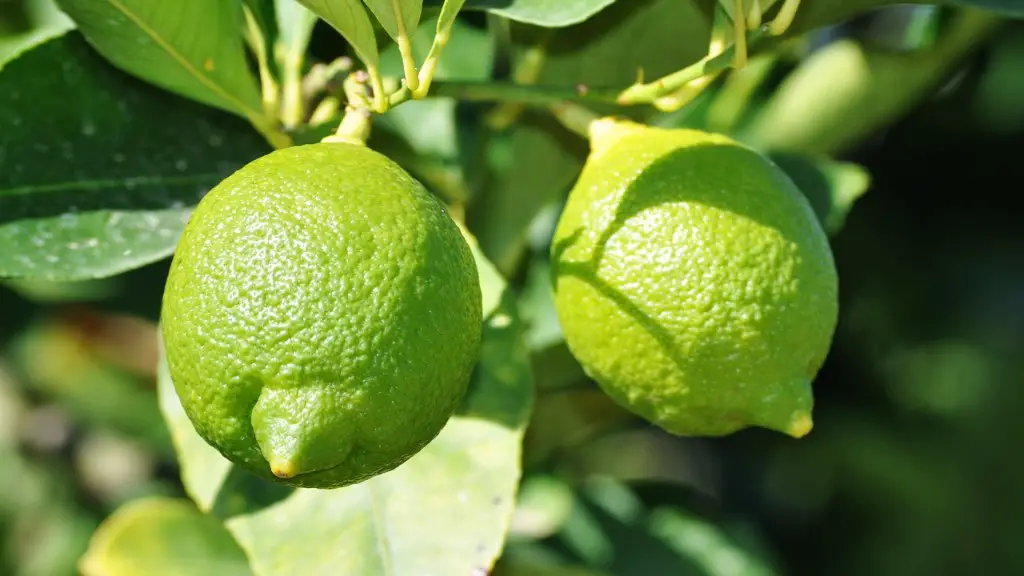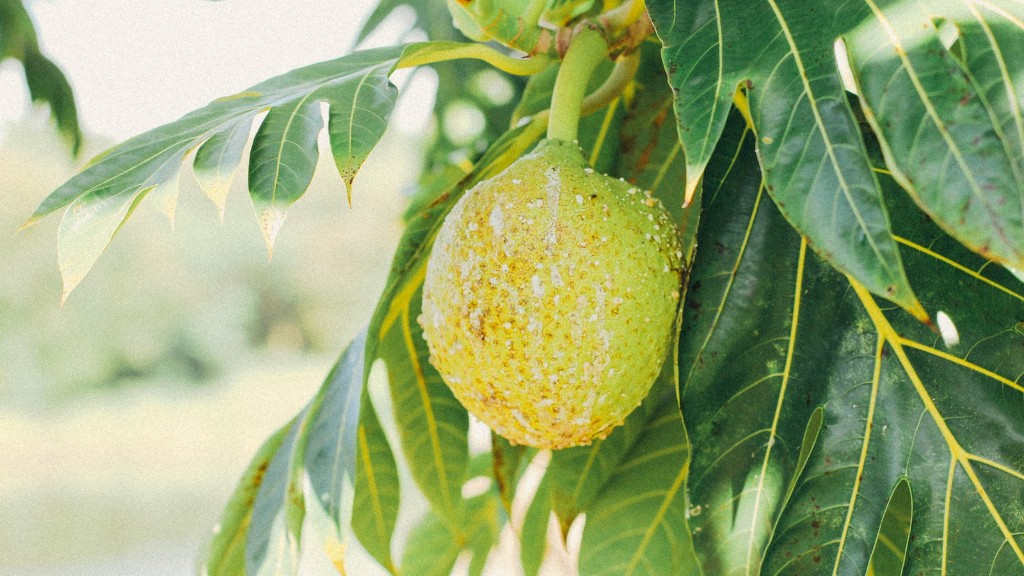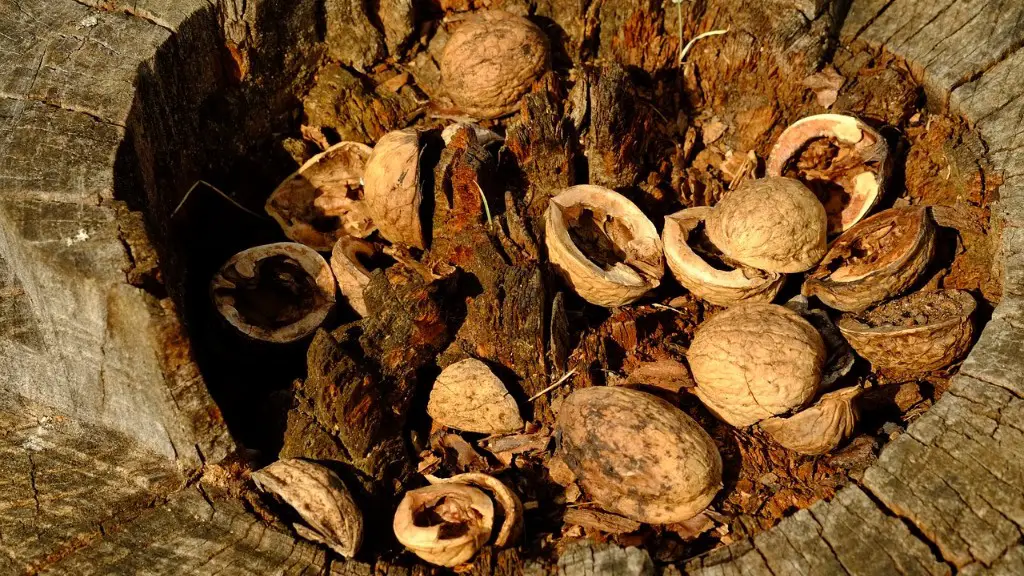When it comes to growing lemon trees, one recurring question is—how long does it take for a lemon tree to produce fruit? Understanding the timeframe for different types of citrus can help gardeners decide which lemon varieties to grow and prepare for an abundant harvest.
Generally speaking, a lemon tree planted from a seed will take around three to four years to produce its first crop. If a grafted lemon tree is planted, the production time can start as early as six months, with a better crop yield expected each year. The period between flower and fruit production is controlled by a number of factors, such as pollination, sunlight and temperature.
Pollination is critical in the production of lemons, as this process helps to transfer the pollen grain from the male stamen of the flower to the female pistil. Pollination is usually accomplished by bee populations or from humans, known as hand pollination. If pollination is unsuccessful, then the tree is unlikely to produce any fruit.
Ample amounts of sunlight and warm temperatures during the growing and fruiting season are imperative for healthy lemon tree production. In areas with mild climates, lemon trees can thrive outdoors all year, however, during winter various trees may need to be moved indoors. The lack of proper temperature can, in some cases, affect the growth of fruit.
Lemons mature anywhere from three to six months, meaning that once picked, the tree will start producing its next crop quickly. Certain varieties of citrus may bear fruit throughout the year, while other lemon varieties fruit only seasonally. Regardless of when it is produced, lemons add their distinct flavor and tangy zest to many types of dishes.
Pollination and Temperature
Pollination is an important process for the successful production of lemons. When a flower is pollinated, the pollen grain is transferred from the anther, or male stamen of the flower, to the stigma, or female organ. This helps to start the process of fruiting and will yield the plant with fruit within a few months. Pollination may be accomplished by bees or other invertebrates, or through hand-pollination.
Temperature and weather conditions also play a role in the production of lemons and other citrus fruit. If temperatures are too low, then the tree may not be able to produce as many, or any, fruits. During winter months, growers may need to move their trees indoors to protect them from extreme conditions. On the other hand, if temperatures are too hot, growth can be stunted and fruit may suffer from sunburn.
Sunlight is another important factor, as lemon trees and citrus trees in general, require plenty of light to produce an abundant crop. Trees should be placed in a sunny spot and get around 6 to 8 hours of sunlight every day. Shade cloths can also be used to protect trees from excessive heat.
Lemon trees also need regular watering and fertilizing to remain healthy and produce large fruits. Soil should be kept moist, but not soggy, as this can cause issues such as root rot. Soil should also be enriched with fertilizers every few months.
Climates for Lemon Production
When deciding upon which type of lemon tree to plant, the climate should be taken into consideration. The flavor of the fruits from lemon trees grown in tropical climates are sweeter, whereas lemon trees grown in cold areas tend to be more acidic.
In areas with mild climates, such as the southern United States and California, it is possible to grow lemon trees year-round outdoors. However, citrus trees affected by cooler temperatures may benefit from being moved indoors for the winter. Trees can also be grown indoors year-round in containers, however, additional management may be necessary.
Fragrant lemon trees, such as Meyer and Lisbon lemons, can produce fruits year-round in tropical and warm climates. Additionally, the Bearss, or Persian lime, has the ability to produce a continuous amount of fruits under ideal growing conditions. Frost and freezing temperatures can damage or even kill a tree, so it is best to avoid these conditioned unless the tree is properly protected.
When it comes to lemon tree production, timing is the key factor. It may take at least three years for lemon trees started from seed to produce fruits, whereas grafted trees have a shorter wait of only 6 months. Whatever the lemon tree variety, pollination, proper temperature and sunlight will influence the success of its growth and yield.
Harvesting Lemon Fruits
Most varieties of lemon will be ready to be harvested between August and December, but gardening experts recommend harvesting when the fruit’s color is greatest or its flavor is at its peak. Lemons generally can stay on the tree between three and six months after they are harvested, depending on the variety and the amount of water the tree is supplied with.
When it comes to harvesting lemons, it is important to use a pair of sharp scissors or clippers to remove the fruits carefully. If the fruits are pulled off the tree, it may cause damage to the tree as well as the other fruits ripening. Also, be sure to collect any fallen fruits as soon as possible, as those will be more susceptible to pests and disease.
During the harvest, the fruits need to be carefully inspected. Any fruits that look diseased or damaged should be discarded, as this can affect the entire crop. If the lemon is ripe it should feel firm and have a yellow color. Keeping the freshly-picked fruits in a cool area will help them last longer.
When it comes to storing lemons, they can be placed in the refrigerator to keep them fresh for a few days. Additionally, lemons can be frozen and left in the freezer for several months. To freeze lemons, it is best to slice the lemons into wedges, or juice and freeze the juice in ice cube trays.
Preparing Lemon Trees before Production
To ensure a healthy and successful season of lemon production, gardeners should prune the tree at the end of winter or early spring. Pruning helps to reduce the pickiness rate and encourages regular blossoming and fruiting . Additionally, spraying with a fungicide can help to manage pest and disease, which can be a major issue for lemon trees.
Regular feeding is also important for keeping a lemon tree healthy, as citrus trees require well-balanced fertilizer full of nitrogen and potassium. Soil should be enriched with organic matter or well-rotted manure every three to four months, as this helps to bolster nutrient levels in the soil.
In some cases, the flowers may be affected by a pest or disease which can interfere with pollination. This can be managed either with sprays or predators, such as ladybugs or lacewings. Natural predators control pests without affecting the environment, while also providing a natural way to control health problems in the tree.
Lemon trees need proper growing conditions and plenty of care to thrive and produce an abundant harvest. By understanding the growing needs of this citrus tree, gardeners can start to enjoy its lemony tartness sooner.




